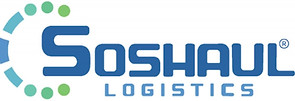What Is A DOT Audit? What Causes A DOT Audit?
- Dr. Sean Goffnett, Eric Carter, Samantha Allen
- May 25, 2023
- 4 min read
Updated: Oct 5, 2023
The Department of Transportation (DOT) plays a crucial role in regulating and overseeing the trucking industry, ensuring the safety of both drivers and the general public. One of the ways the DOT ensures compliance with federal regulations is through DOT audits. In this blog post, we will explore what a DOT audit entails and the common causes that prompt a DOT Audit for a carrier or owner-operator in the trucking industry.

What is a DOT Audit?
DOT audits are used to determine if an owner-operator or trucking company is in compliance with safety standards and regulations overseen and administered by FMCSA. Driver safety performance is one category or factor commonly evaluated during DOT audits. These audits also check if carriers or trucking companies are keeping accurate records.
DOT audits can happen with little warning to the trucking company, so it is important to maintain proper safety and compliance records throughout the year. Having a system in place that is designed to keep drivers compliant will help companies have smooth audit processes and increase the chances of passing. Any commercial driver operating a vehicle with a GVWR of more than 10,000 pounds and is involved in interstate commerce or the transportation of property or passengers is subject to a DOT audit.
Every new entrant operating a commercial motor vehicle will also undergo a DOT audit. Companies that operate intrastate commerce will be subject to state regulations for commercial vehicles.
DOT audits can either be comprehensive or focused and conducted on-site or offsite. When investigators conduct comprehensive audits, they will essentially review all of the BASIC factors and determine a carrier’s safety rating or ranking. In focused audits, the investigator will review one or two BASIC factors and determine the rating of that BASIC. Offsite audits are done via remote communication, such as using email or fax and Zoom, WebEx, or Microsoft Teams, and have become more frequent since the COVID pandemic. Investigators will visit a carrier’s physical office when conducting an onsite audit. The sample the investigator will choose to audit is determined by the size of a carrier’s fleet.
A common DOT audit is the New Entrant Safety Audit which every trucking company is subject to in their first 12 months of operation. Per FMCSA guidelines, the new entrant safety audit is intended to make sure the company meets set safety standards and regulations that have been set by Congress.
New Entrant Safety Audits are generally based on the following criteria:
Alcohol and Drug Violations
Do you have an alcohol and drug test system in place? Are you part of a random drug and alcohol testing group? Do you have a driver who has tested positive on a drug test or has altered the results?
Whether it’s being a part of a drug and alcohol consortium or providing supervisor training, you should have a DOT-approved system in place.
Driver violations
Drivers must be medically qualified.
Drivers must have active and appropriate CDLs for equipment and freight.
Operations violations
Operations violations should be a concern of every trucking company and require companies to have active insurance and maintain accurate driving logs. The Electronic Logging Device mandate made it important to use an FMCSA-approved ELD.
Do you have the required insurance and are you accurately tracking HOS?
Repairs and inspections violations
Trucking companies must make sure that they have records of any previous equipment inspections, or any other problems drivers notice with the equipment.
Companies must maintain their equipment to stay compliant during a DOT audit.
Other major DOT audits include Compliance reviews which are a form of audit that looks at a trucking company’s safety performance and how well they are managing regulatory processes. Compliance reviews are conducted on-site with examinations headed by a Federal or State safety investigator. Security audits are a form of DOT audit that looks at your safety plan, driver training, and security measures. Hazardous material DOT audits are designed to review training, policy, shipping documentation, and labeling of hazardous material.
What prompts or causes a DOT Audit?
Carriers with higher CSA scores are prime candidates for DOT audits and get placed on the FMCSAs priority list to receive an audit. The FMCSA will also consider drivers that have reported crashes or roadside violations for audits. DOT audits can be triggered by any single event or a combination of events like those listed below:
Failure of a new entrant audit
Crashes
Any complaint in writing
High CSA activity - Roadside inspections resulting in OOS violations
Follow up to past audit activity
Routine compliance
Random selection
Compliance with federal regulations is crucial for carriers to avoid penalties and maintain their standing within the industry. Audits provide an opportunity for carriers to verify their compliance status and address any non-compliance issues before they escalate. By demonstrating a commitment to regulatory compliance, carriers can protect their reputation and build trust among clients, shippers, and other industry stakeholders.
Learn more about how to prepare for a DOT audit by downloading our DOT Audit Checklist.
Ready to START, DRIVE, & ACCELERATE your trucking business? Check out our course here!

Interested in being notified when more free resources are available? Subscribe down below and you'll be the first to know!
Soshaul Logistics LLC and its affiliates do not provide tax, legal or accounting advice. This material has been prepared for informational purposes only, and is not intended to provide, and should not be relied on for, tax, legal or accounting advice. It is meant to serve as a guide and information only and Soshaul Logistics, LLC - Copyright 2023 - does not assume responsibility for any omissions, errors, or ambiguity contained herein. You should consult your own tax, legal and accounting advisors before engaging in any transaction or operation.




Comments